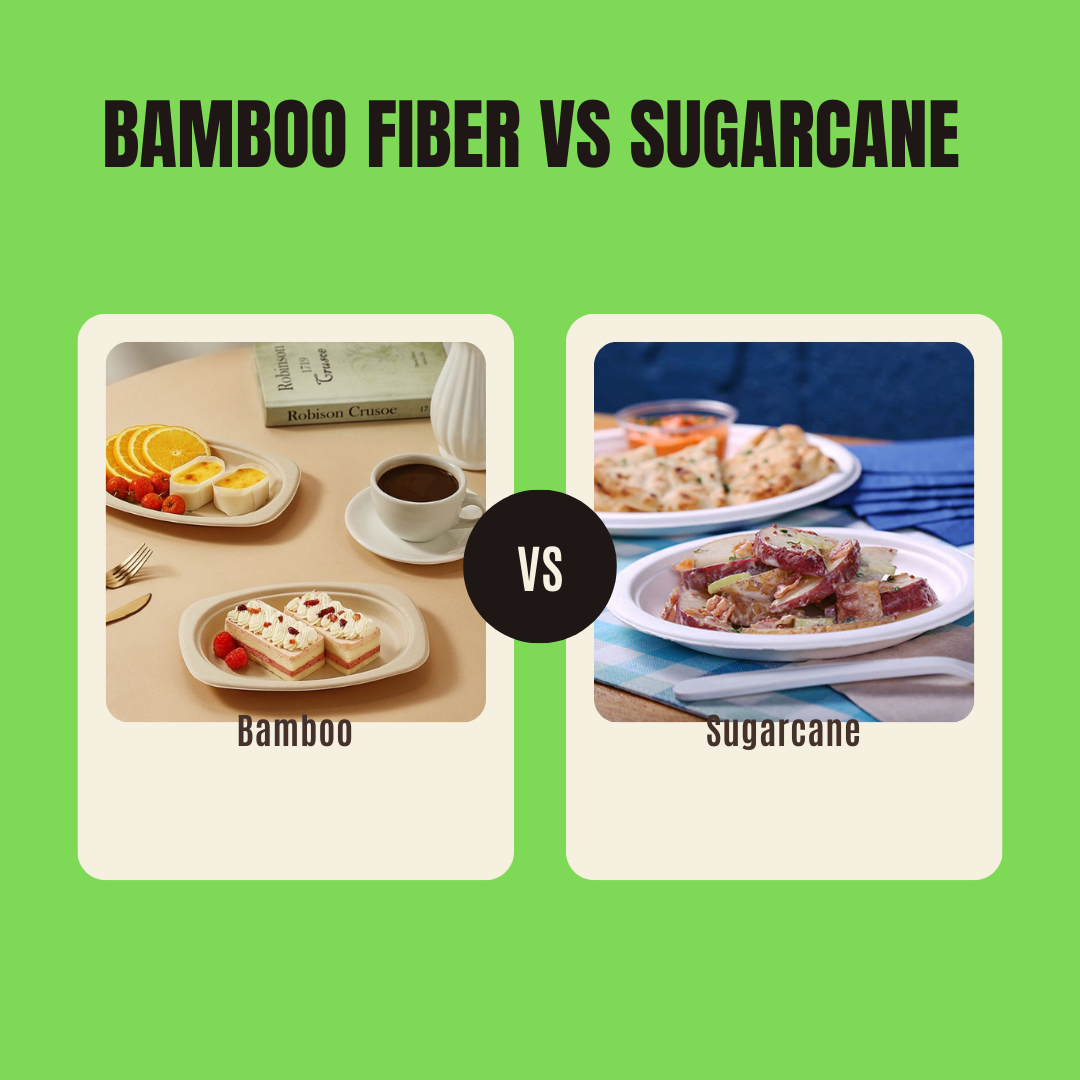 Are you curious about the safety and performance of bamboo fiber and sugarcane pulp tableware? Let’s dive into the FDA test results and see how they compare.
Are you curious about the safety and performance of bamboo fiber and sugarcane pulp tableware? Let’s dive into the FDA test results and see how they compare.
Bamboo and sugarcane tableware pass FDA safety tests. But bamboo handles heat better; sugarcane suits lighter use.
I’ve got details from FDA tests. So, keep reading because you’ll find out which fits your needs best.
What Are the FDA Safety Standards for Tableware?
Are FDA rules confusing to you? They are to me. So, let’s simplify what they mean now.
FDA tests check if tableware leaks harmful chemicals. For example, bamboo and sugarcane both pass these safety checks.
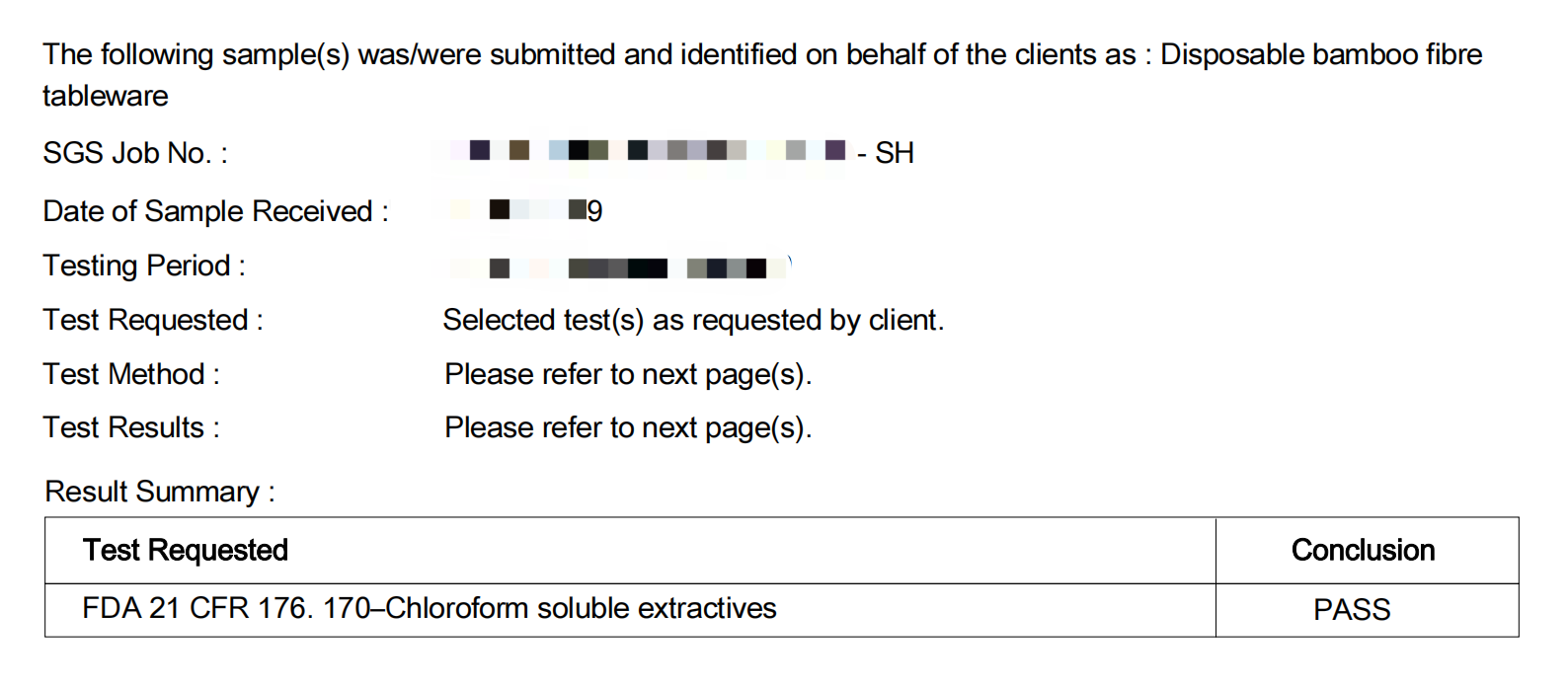
FDA tests keep food safe. For example, they use liquids to mimic food types like water or oil.
What Tests Does FDA Use?
FDA runs several checks. First, they test with water. Then, they use ethanol for alcohol. Plus, n-Heptane mimics oily food.
How Do Conditions Compare?
Bamboo and sugarcane face different tests. So, here’s a table to show the details clearly now.
| Simulant | Bamboo Conditions | Sugarcane Conditions | Difference |
|---|---|---|---|
| Water | 250°F, 2 hours | 150°F, 2 hours | Bamboo takes more heat for hot liquids. |
| 8% Ethanol | 120°F, 24 hours | 150°F, 2 hours | Bamboo lasts longer; sugarcane is quick. |
| 50% Ethanol | 120°F, 24 hours | 150°F, 2 hours | Bamboo stays stable; sugarcane is fast. |
| n-Heptane | 150°F, 2 hours | 100°F, 0.5 hours | Bamboo handles oil better over time. |
Why These Differences Matter
Bamboo tests at 250°F for water. So, it’s great for hot soup. But sugarcane tests at 150°F, and it’s better for warm food. Also, bamboo lasts 24 hours in ethanol. However, sugarcane takes 2 hours. Next, for oil, bamboo beats sugarcane in heat and time.
How Do Bamboo and Sugarcane Perform in FDA Tests?
Test results matter to me. Do they matter to you? Then, let’s see how these materials do now.
Bamboo and sugarcane pass FDA tests. However, bamboo leaks fewer chemicals under tough conditions.
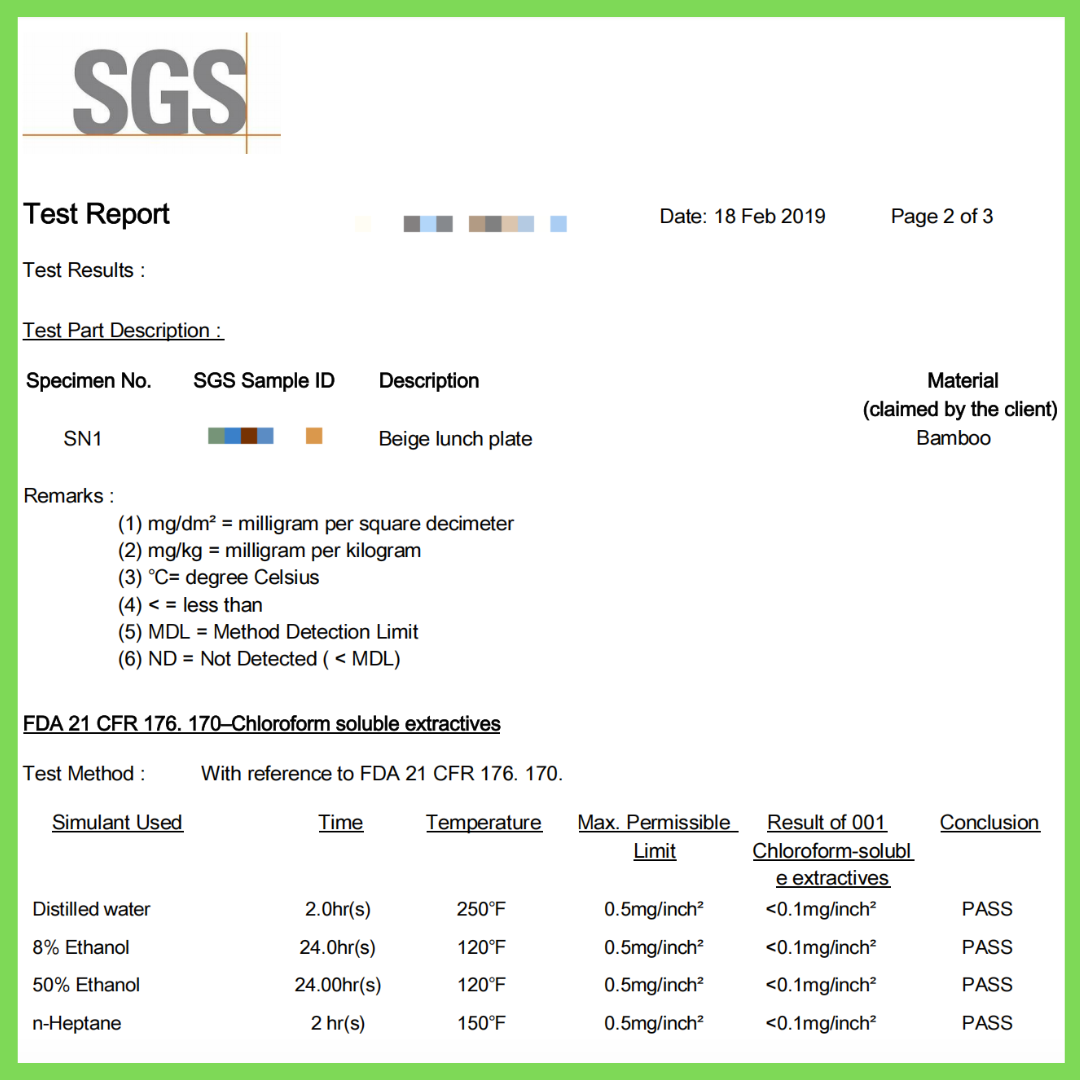
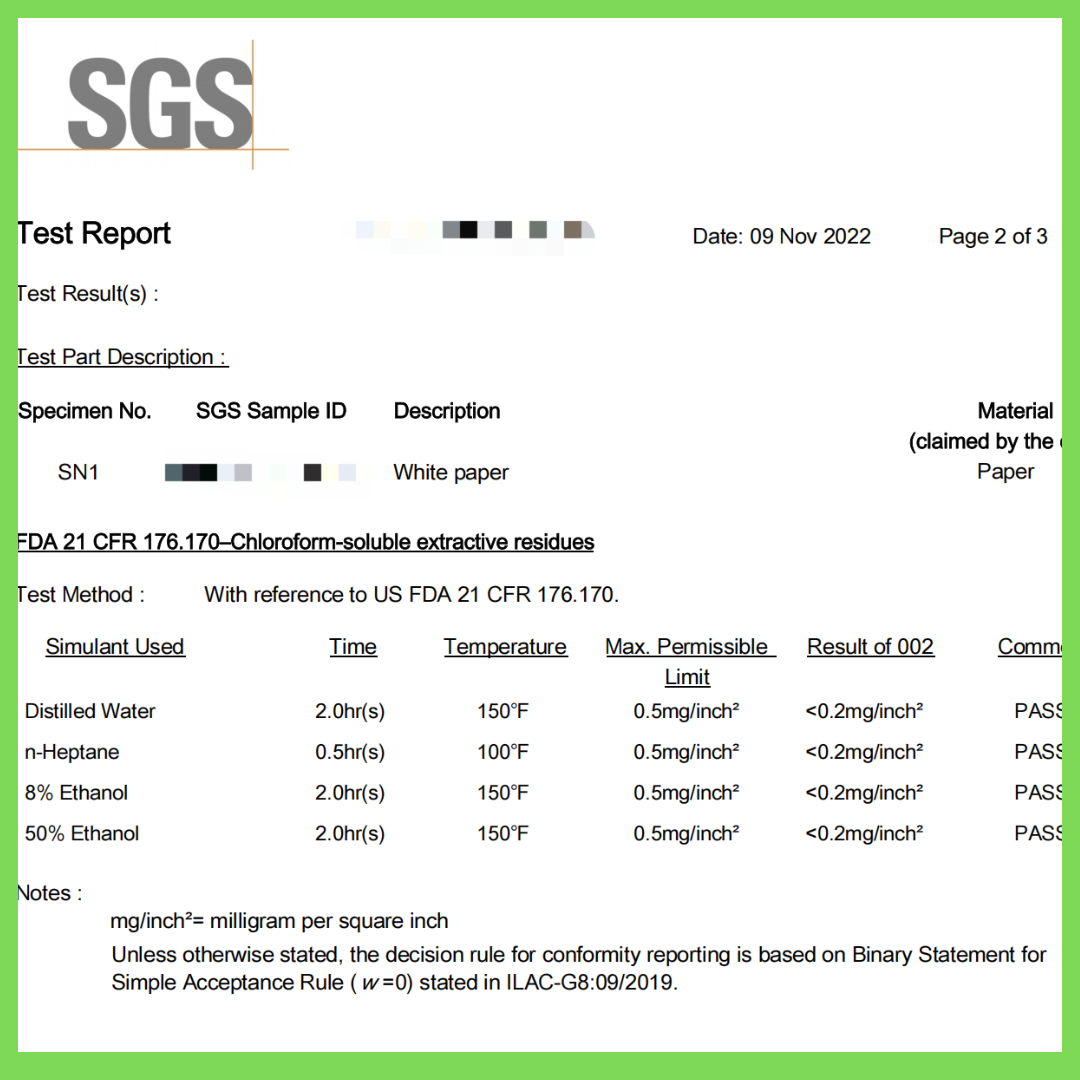
Results show clear differences. For example, bamboo leaks less than sugarcane in every test because it’s stronger.
What Are the Test Results?
Here’s a table with the numbers. Plus, it compares bamboo and sugarcane directly so you can see.
| Simulant | Bamboo Result | Sugarcane Result | Conclusion |
|---|---|---|---|
| Water | <0.1 mg/inch² | <0.2 mg/inch² | Both are safe; bamboo leaks less. |
| 8% Ethanol | <0.1 mg/inch² | <0.2 mg/inch² | Bamboo does better again. |
| 50% Ethanol | <0.1 mg/inch² | <0.2 mg/inch² | Bamboo keeps leakage low. |
| n-Heptane | <0.1 mg/inch² | <0.2 mg/inch² | Bamboo stays safer with oil. |
What Do Results Mean?
- Bamboo Fiber: Performed exceptionally well, with all results below 0.1 mg/inch², even under higher temperatures and longer durations.
- Sugarcane Pulp: Also passed all tests but with slightly higher results, all below 0.2 mg/inch².
These results suggest that while both materials are safe, bamboo fiber tableware might offer slightly better performance under more demanding conditions.
How Do Test Results Impact Your Buying Choice?
I get annoyed when quality’s unclear. Do you? Let’s dig into the FDA test results.
Bamboo fiber releases <0.1 mg/inch²; sugarcane pulp <0.2 mg/inch². Both beat FDA’s 0.5 mg/inch² limit easily.
These results guide my wholesale decisions. Let’s explore why they matter.
Safety First
Bamboo releases less than 0.1 mg/inch² across all tests. Sugarcane hits under 0.2 mg/inch². I feel safe with both. The FDA cap is 0.5 mg/inch². My clients in the U.S. demand this compliance. I sleep better knowing PANABAM’s bamboo clears it.
Consistency Counts
Bamboo’s numbers stay tight—always under 0.1 mg/inch². Sugarcane varies but stays below 0.2 mg/inch². I like bamboo’s predictability. Once, a client tested my bamboo tableware. Results matched SGS. Sugarcane’s fine, but I trust bamboo more.
Practical Use Cases
Bamboo’s lower extractives scream durability. Sugarcane’s higher (but safe) numbers fit lighter duty. I see bamboo in busy cafes. Sugarcane suits picnics. My factory’s bamboo holds up in heat.
| Test Simulant | Bamboo Result | Sugarcane Result | My Pick |
|---|---|---|---|
| Water | <0.1 mg/inch² | <0.2 mg/inch² | Bamboo for heat |
| Ethanol (8%) | <0.1 mg/inch² | <0.2 mg/inch² | Bamboo for long use |
| Ethanol (50%) | <0.1 mg/inch² | <0.2 mg/inch² | Bamboo stays strong |
| n-Heptane | <0.1 mg/inch² | <0.2 mg/inch² | Bamboo for oily food |
We deal with wholesalers daily. Bamboo’s lower extractives give me confidence. Sugarcane’s safe, but bamboo feels premium.
Which Tableware Is Better for Your Business?
Choosing between bamboo fiber and sugarcane pulp tableware depends on your specific needs.
Bamboo fiber tableware offers higher durability, while sugarcane pulp is more cost-effective. Both are fully biodegradable and compostable. Consider your business needs before deciding.
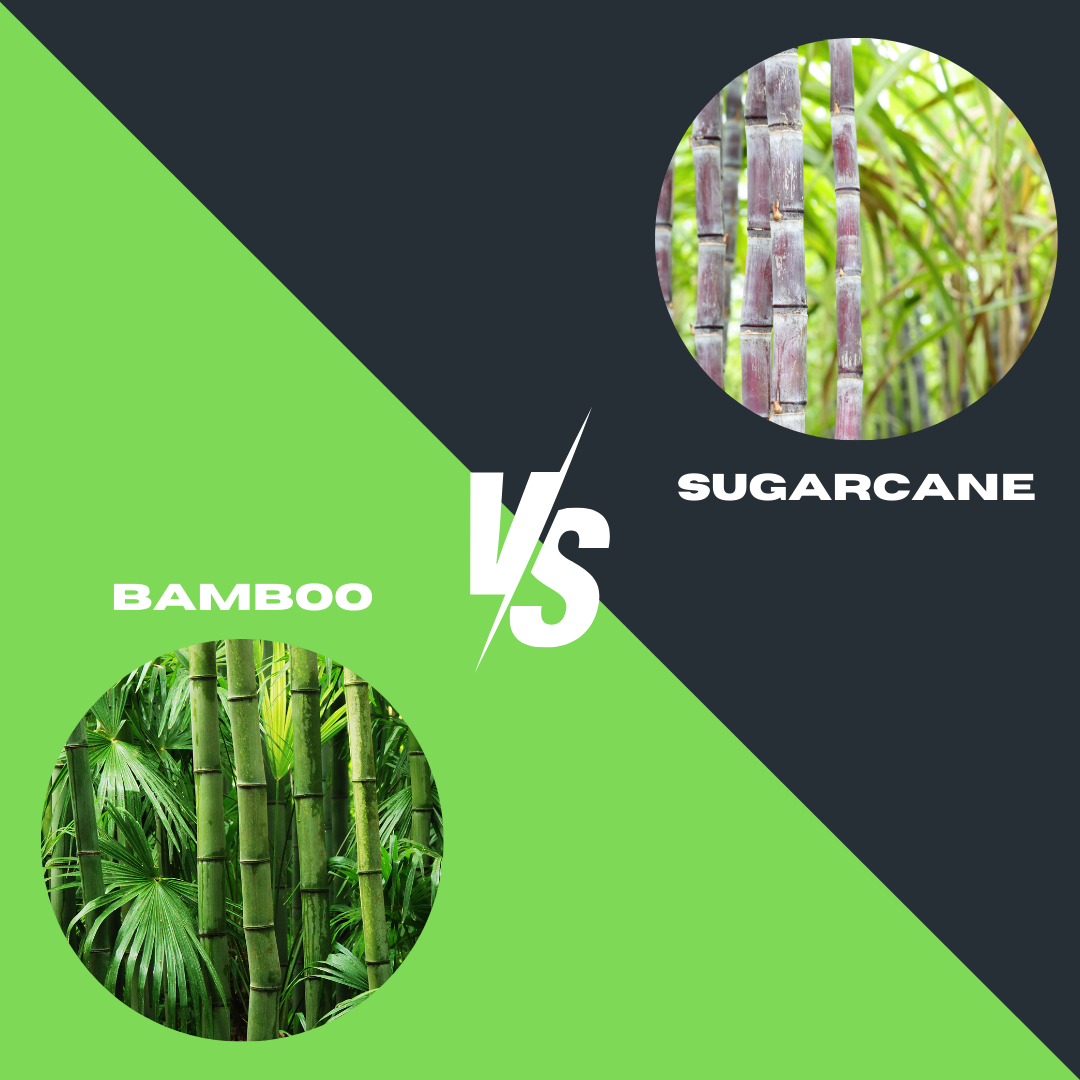
Let’s explore the pros and cons of each material to help you make an informed decision.
Pros and Cons of Bamboo Fiber Tableware
- Pros:
- Higher durability and heat resistance.
- Lower chemical leaching under extreme conditions.
- Fully biodegradable and compostable.
- More sustainable due to faster bamboo growth.
- Cons:
- Slightly higher cost compared to sugarcane pulp.
Pros and Cons of Sugarcane Pulp Tableware
- Pros:
- Cost-effective and widely available.
- Lightweight and easy to handle.
- Fully biodegradable and compostable.
- Cons:
- Slightly lower durability under high heat.
Let’s figure out your fit.
We’ve run PANABAM for years. These materials solve different problems. Let’s figure out your fit.
Heat and Strength Needs
Bamboo takes 250°F and 24-hour soaks. I use it for hot catering orders. Sugarcane’s 150°F limit fits cold dishes. My U.S. clients love bamboo’s toughness. Sugarcane’s lighter vibe suits events.
Cost vs. Quality Balance
Bamboo’s pricier but durable. Sugarcane’s cheap and compostable. I sell bamboo to quality-focused chains. Sugarcane goes to budget buyers. Zack, you want high quality. Bamboo’s worth it.
Market Appeal
Bamboo’s natural look pops. Sugarcane’s plain but green. My brand thrives on bamboo’s style.
| Need | Bamboo Fiber | Sugarcane Pulp | My Advice |
|---|---|---|---|
| Heat Resistance | High (250°F) | Medium (150°F) | Bamboo for hot food |
| Cost | Higher | Lower | Sugarcane for budgets |
| Look | Stylish bamboo grain | Simple white | Bamboo for branding |
Conclusion
Bamboo fiber tableware FDA tests prove it’s a top choice for safety and strength. For example, it handles heat up to 250°F and leaks less than 0.1 mg/inch². On the other hand, sugarcane pulp passes FDA tests too, and it’s cheaper with leakage under 0.2 mg/inch².
So, if you need durable tableware for hot or oily foods, bamboo wins. But if cost matters more, sugarcane works well. Plus, both are eco-friendly options for your business. Want to explore bamboo further? Check out PANABAM’s range at www.panabam.com.

Shmily Lee
Hi there! I’m Shmily, a proud mom to an amazing boy and the manager of PANABAM. We’ve been producing eco-friendly bamboo tableware that’s both sustainable and high-quality. I’m passionate about helping businesses embrace greener solutions. Let’s connect and create a more sustainable future together!